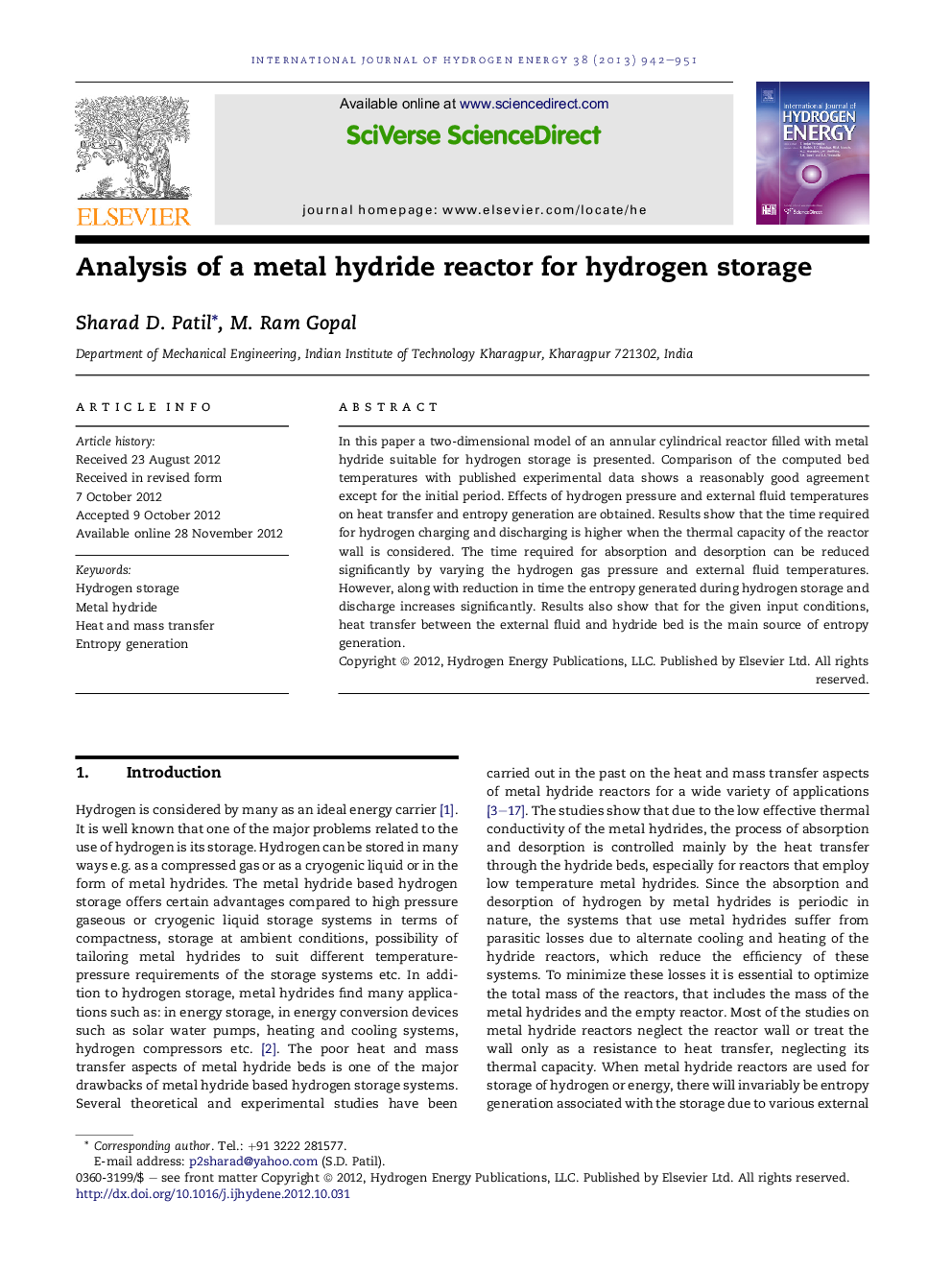| Article ID | Journal | Published Year | Pages | File Type |
|---|---|---|---|---|
| 1282060 | International Journal of Hydrogen Energy | 2013 | 10 Pages |
In this paper a two-dimensional model of an annular cylindrical reactor filled with metal hydride suitable for hydrogen storage is presented. Comparison of the computed bed temperatures with published experimental data shows a reasonably good agreement except for the initial period. Effects of hydrogen pressure and external fluid temperatures on heat transfer and entropy generation are obtained. Results show that the time required for hydrogen charging and discharging is higher when the thermal capacity of the reactor wall is considered. The time required for absorption and desorption can be reduced significantly by varying the hydrogen gas pressure and external fluid temperatures. However, along with reduction in time the entropy generated during hydrogen storage and discharge increases significantly. Results also show that for the given input conditions, heat transfer between the external fluid and hydride bed is the main source of entropy generation.
► Mathematical model of a metal hydride reactor for hydrogen storage is presented. ► Variation in external fluid and reactor wall temperatures are considered. ► Entropy generated during hydrogen charging and discharging is computed. ► Heat transfer is seen to be the major contributor for entropy generation. ► Results show the need for a trade-off between entropy generated and cycle time.
